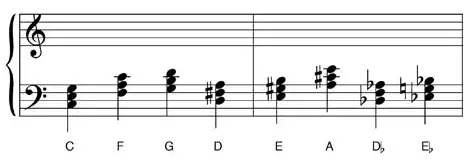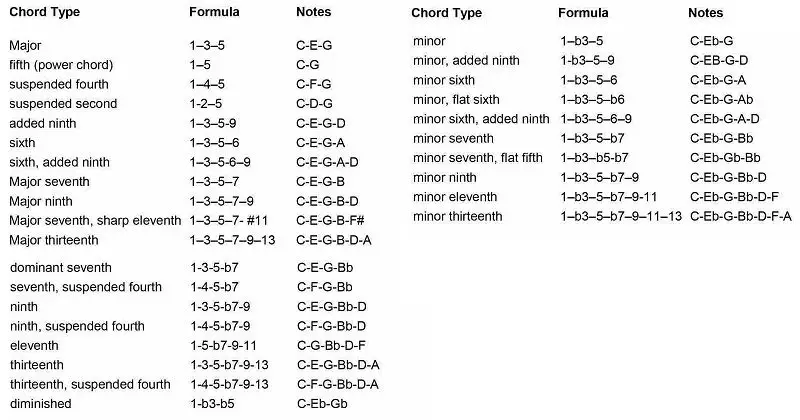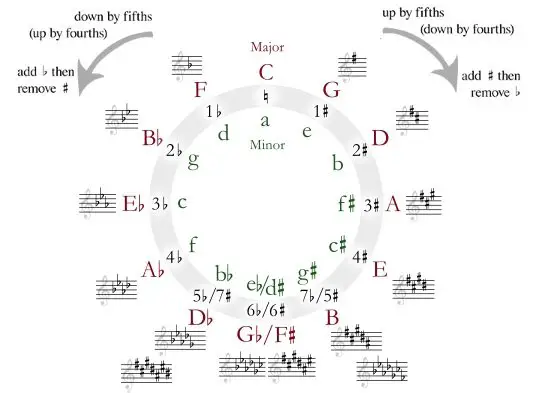
Chords in music are set of notes played together to enhance the overall sound. There are various types of chords which you will learn over due course of time. Understand their importance and how to use them.
Introduction
Lot of beginner students get to hear the word ‘chord’ after a few weeks of lessons and are eager to know about it, although the teacher might wait for the right moment to introduce the topic. Even those who are not musicians and have never studied music theory seem to have heard the term ‘chord’ and feel its something very difficult to understand and use (although that’s not the case).
Simply put, you play a chord when you play multiple notes together. So for example, to play a C chord, you will press the notes, C, E and G together at the same time.
Types of Chords
There are several types of chords that differ from each other in the manner in which it is constructed. If you’re a beginner, you really don’t have to bother about most of these (major, minor is what you need to focus on as a beginner, and seventh once you’re comfortable with the major/minor chords).
Here are the various chord types:
- Major: C + E + G
- Minor: C + Eb + G
- Fifth (power chord): C + G
- Diminished: C + Eb + Gb
- Major Seventh: C + E + G + B
- Minor Seventh: C + Eb + G + Bb
- Dominant Seventh: C + E + G + Bb
- Suspended: C + D + G (Sus2 Chords)
- Suspended: C + F + G (Sus4 Chords)
- Augmented: C + E + G#
- Extended: These inlcude ninth, eleventh and thirteenth chords.

Triads
The most basic chord is the TRIAD. A chord made of three notes is known as a triad. A triad will have a root note and the third and fifth note above the root note.
The most common triads are:
- Major – has a major third and a perfect fifth
- Minor – has a minor third and a perfect fifth
- Diminished – has a minor third and a diminished fifth
- Augmented – has a major third and an augmented fifth
Note: A major chord sounds bright and lively, as opposed to the minor chord which has a tinge of sadness associated with them.
Constructing a Triad
To construct a triad all you have to do is to count two thirds. So, you’ll pick the third from the root AND the third from the third.
Thus, in order to construct a C triad with the notes from the C major scale, we do this:
C is the first note, D is the second note and E is the third note. Select E. Now we start in E, so F is the second note and G is the third note from E. Select G. Now we have three notes a third apart from each other, the TRIAD: C E G.
And we can keep on doing this with all the notes from the scale:
Minor Chords
- Cm (C minor): C + Eb + G
- Dm (D minor): D + F + A
- Em (E minor): E + G + B
- Fm (F minor): F + Ab + C
- Gm (G minor): G + Bb + D
- Am (A minor): A + C + E
- Bm (B minor): B + D + F#
Seventh Chords
These chords use four notes. One more note is added to a triad in order to get the seventh note.
The most common seventh chords are:
- Dominant 7 (or just “7”) – is a major triad with a minor 7 added.
- Minor 7 – is a minor triad with a minor 7 added.
- Diminished 7 – is a diminished triad with a diminished 7 added.
- Half diminished – is a diminished triad with a minor 7 added.
There are many more “triad + 7” combinations than mentioned here, but these are the more commonly used.
Similar to seventh chords, you also have ninth, eleventh and thirteenth chords as well. As of now, you can just stick to the seventh chords.

Chord Inversions
A chord with its root note at the bottom is called the root position of the cord. However, the same chord can be played in other ways as well.
When the third of the chord (e.g. E in a C major triad) is at the bottom, it is said to be in first inversion. When the fifth of the chord (G in a C major triad) is at the bottom, it is said to be in second inversion.
KeytarHQ editorial team includes musicians who write and review products for pianists, keyboardists, guitarists & other musicians. KeytarHQ is the best online resource for information on keyboards, pianos, synths, keytars, guitars and music gear for musicians of all abilities, ages and interests.



Leave a Reply